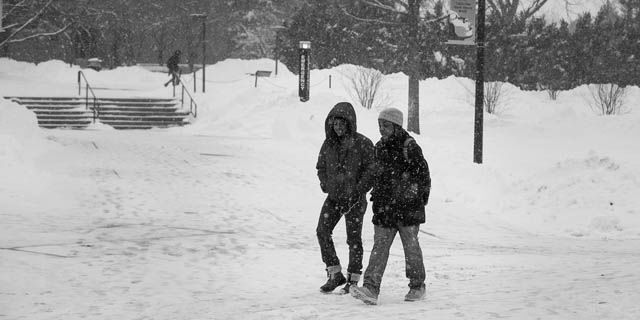New year; same below-zero weather
January 18, 2018
DeKALB — Whether students walk or drive to class, the low temperatures brought on by La Nina will force them to take extra precautions.
The weather in northern Illinois has taken its annual winter turn toward a deep freeze.
“We’re not even close to record territory,” said Victor Gensini, Geographic and Atmospheric Sciences associate professor. “But even with teens and single digits, with 25-mile- per-hour winds, it can feel like we’re hitting these record lows.”
The National Weather Service reported the DeKalb area has seen below-zero temperatures and wind chills reaching as low as minus 12 within the last week.
“You don’t need that record cold for cold to be a safety issue,” Gensini said. “But this pattern that we’re in right now is a pretty classic La Nina weather pattern.”
Gensini said La Nina occurs when the ocean water near the equator is colder than usual. This changes the configuration of the jet stream and causes a colder and snowier winter than usual.
After an unusual rise in temperatures the week before classes started, temperatures are trending back down to their traditional La Nina lows.
“I typically don’t go a lot of places during the week,” said Holly Hansen, a sophomore environmental studies major. “But when it’s this cold out, I have to remember to start my car at least a few times.”
The National Weather Service advises people to stock up on necessities like food, water, baby supplies and pet supplies. The weather service also recommended people to keep their vehicle’s gas tanks filled and have access to a first aid kit, basic tool kit, non-perishable food and any supplies needed in case of a special needs situation.
“If you are in an area with a wind chill warning, avoid going outside during the coldest parts of the day,” according to the National Weather Service’s website. “If you do go outside, dress in layers, cover exposed skin and make sure at least one other person knows your whereabouts. Update them when you arrive safely at your destination.”
With the beginning of the semester in progress, students may not be able to avoid going outside. Many students will be faced with the old-fashioned uphill-both-ways, journey through the snow to classes either by walking or biking.
“Short of getting battery powered socks and gloves, if you are planning on being out in the cold for a prolonged period of time, the best thing to do is dress in layers,” Gensini said. “The first layer next to the skin should be waterproof to keep the moisture away from the skin.”
Layers of clothing may make the travel to class more comfortable, but the smart move may be for students to take a safer route to class, such as riding the bus or finding a ride from a friend.
“Usually I’ll walk if it’s warm, but not if it’s cold, but no matter how many layers I put on, it’s just not warm enough,” said sophomore nursing major Kathryne Rodriguez. “I’ll just take the bus.”







